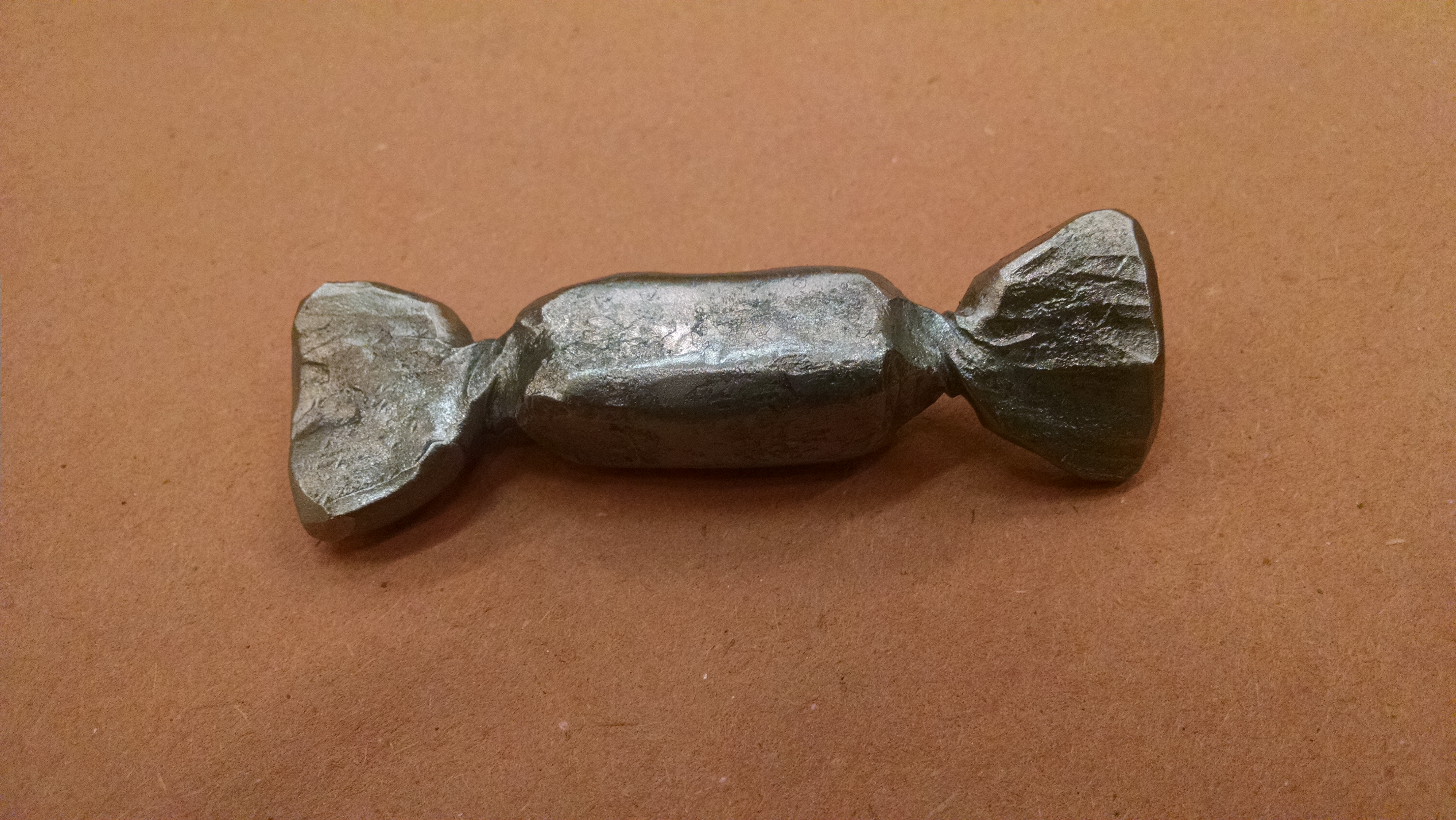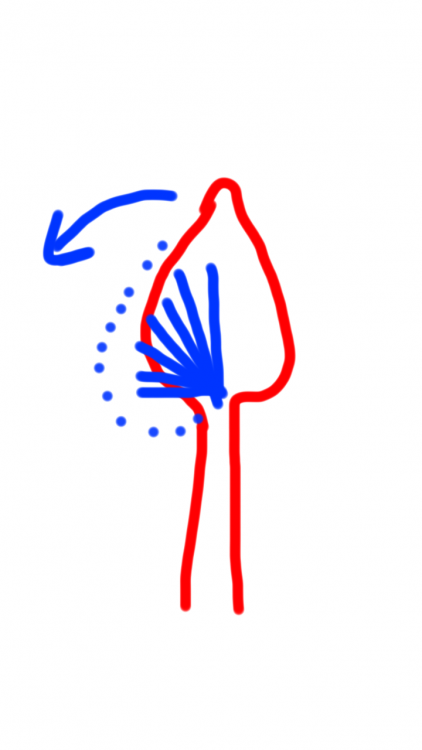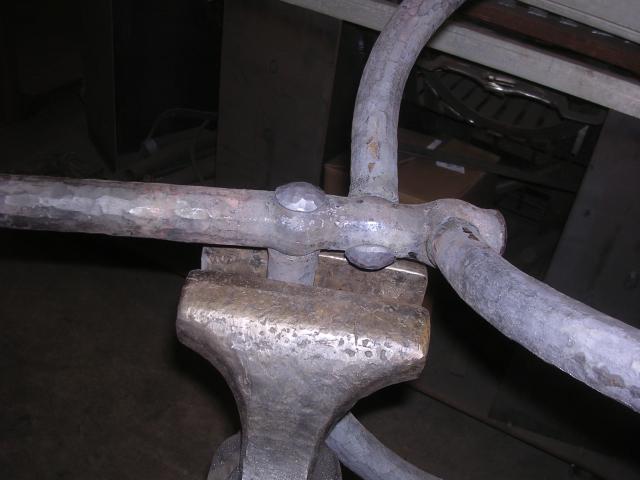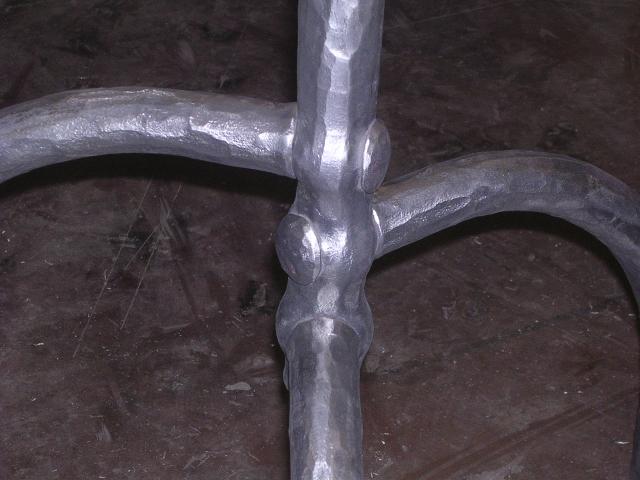-
Posts
2,405 -
Joined
Content Type
Profiles
Forums
Articles
Gallery
Downloads
Events
Everything posted by jeremy k
-

Tomahawk test piece for ABANA
jeremy k replied to Gerald Boggs's topic in Axes, Hatchets, Hawks, Choppers, etc
Gerald, that is a very clean looking tomahawk. -

Were these items made by a blacksmith?
jeremy k replied to Metal detector's topic in Blacksmithing, General Discussion
How do you determine these are from the narrow timeline of 1850-1860? Nails of all sizes, and possibly an axel type re-enforcement plate? -
Don't know why that is so tough - the Coke opener on my kitchen counter has the same bolt hole dimensions, just make one that fits the bolt holes he has. Rubber or plastic washers will take up any slight curve that the panel has for mounting - easy peasy. Although this could have been an engineered "In" dimension so openers could be mounted easily - designers throw in some weird quirks sometimes for good reasons.
-
You don't necessarily need a cross pein either - a rounding hammer will do the same thing with blows in the same pattern as above pic.
-
Hi Dave, Using a crosspein hammer once your get you pre form made and slightly flattened, start inline with stem and work your blows as the attached drawing to pull metal out - around and down towards stem. The end of the the crosspein towards the stem is the pivot point and does not move metal as the other end is walked out and around and down towards stem from centerline of the leaf pre form. Do this in both directions to for each side of the leaf as you desire.
-

Induction Coil Tubing Diameter
jeremy k replied to bajajoaquin's topic in Induction Heating, Oil forges, etc
Why not ask Gene from Mettle Works? -

Starting a very small businuess
jeremy k replied to ryancrowe92's topic in The Business Side of Blacksmithing
Ryan - post a few pics of some of the things you've made that your going to sell. -
Posted By Jr. Strasil - RIP
-
Posted in a previous thread here on IFI years ago by : Coalforge in 2006 Corn Forge By Coalforge July 28, 2006 3,362 views Find their other images My coal forge using corn for fuel. I did not mix the diesel with the corn.
-

Power hammer forging rivets,
jeremy k replied to BeaverNZ's topic in Power Hammers, Treadle Hammers, Olivers
Copy and paste the link? -

What did you do in the shop today?
jeremy k replied to Mark Ling's topic in Blacksmithing, General Discussion
Mark - in that case - you did well, I was not referring to you personally - the picture reminded me of many demos Ive seen that the demoer has their back to the crowd and talking away from them - which makes for a hard demo to watch and hear. -

Preventing equipment sweat
jeremy k replied to Timber Ridge Forge's topic in Blacksmithing, General Discussion
A fan is your friend. - a cheap box fan run 24/7 - prevents any metal sweating in my shop. -

What did you do in the shop today?
jeremy k replied to Mark Ling's topic in Blacksmithing, General Discussion
The worst thing I see at demos, is the person demoing puts their back to the crowd to shield what they are trying to "show". You'd be surprised at how often that happens. -
I did not see that detail of the slotted head machine bolt, - I took it for a riveted over tenon. I had to enlarge the picture a little more to see that. With 123 grilles to make - setting up a milling machine to mill the ends for a tight fit up would be the way to go on the 45º intersection ends. - Good Luck
-
Only 1 rivet per scroll, nothing but tight fit for the 45° points of contact. If you look close the lump/s you think are brazing, it is the casting "Behind" the grille.
-
Jim - am I seeing things? - the scrolls are riveted.
-
Not exactly what your describing but maybe an alternative to your design. This is a base of a coat stand I made back in 2010, 3 legs riveted tenon's equally spaced around the center post. It was 1" legs into 1-1/4" round post if I recall.
-
2" pipe - not length.
-
The size of your forge is nowhere near what the drawing is. It appears way to small for that size burner.
-
I think Brian Brazeal, along with Uri Hofi were a few that started the hammer craze -- Alec(learned from Brian) and many others have just been making hammers that in some cases, use the same forging process, looks and even stampings to help them sell. As Jennifer has done and has done well - made videos showing how to do forgings - I have not decided to spend the time and money on the equipment involved in doing how to videos as much as some day I'd like to. Another one of those "Investment things"
-
Jennifer - you are correct - I was just trying to say that people don't charge what they should to cover those expenses. This is mainly I believe because there are so many circumstances, such as retired from their life supporting job and just wanting something to do even if they only barely cover costs of blacksmithing, and many other scenarios.
-
Starting a 1 person blacksmithing business, - Capital investment - that is every hour of thinking and every $ that goes into that starting at the very first thought of doing it. Your time is worth something - your time learning/practicing is the investment - lets put a $$ amount on that - does one ever recoup that? by charging a flat rate(usually barely covers the current working expenses and a wage for that person). One actually has to make more than what you think to cover replacement equipment / tools( normal wear and tear). I agree the actual charged wage is not universal for all areas of this world due to many factors. What I think would be a more relevant question would be - How can we train people to understand that as a craft person with a very high learning curve of learning (blacksmithing), that our time is very well worth other major professions. Even more so when one gets to the crossroads of hobby/part time to going in full tilt, because by then you will have realized how much tooling and yes more equipment is needed. All this does take time and money - That is the "investment" Have I paid for my investment - over the 30 years of metal working - most likely not but I consider that the cost of doing what I love to do - work with metal. I have expanded my capabilities thru tooling and equipment over the years so in that I can do more of a variety of blacksmithing - its a forever learning occupation. Thank you all for your replies to this thread - I have found it very interesting.




